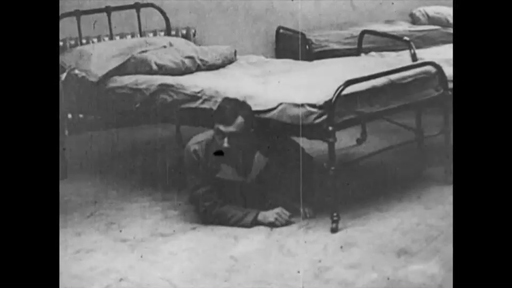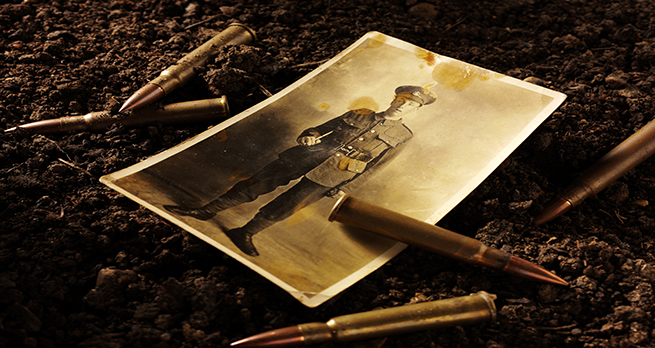1.2 Introducing shell shock
Watch the following video on shell shock.

The term ‘shell shock’ is particularly associated with the First World War. It was used in Britain to describe the various forms of psychological trauma suffered by men as a result of combat. A wide range of symptoms were associated with the condition, as the video above demonstrates. Mental trauma among combatants was nothing new, nor was it particular to British soldiers or the First World War, but the term was not used in other countries or in subsequent wars. In this sense, ‘shell shock’ remains culturally and historically specific.
The first psychological casualties of the war were identified in 1914, but the term shell shock first appeared in a medical context in early 1915, when the military doctor, Sir Charles Myers, used the term in the medical journal The Lancet. The choice of words is telling: nervous breakdown was at first seen to be a consequence of concussion caused by exploding shells, and reflected a general belief that shell shock had physical rather than psychological origins. This diagnosis was partly a consequence of a general stigma attached to mental illnesses that had persisted since Victorian times. Nervous breakdowns were often dismissed as hysteria, and were associated with degeneracy, cowardice and a lack of fortitude in men. Such a condition was therefore entirely at odds with the ideals of masculine behaviour that soldiers were expected to exhibit, and mental breakdown was accordingly seen by many to be a shameful, unmanly condition. By maintaining that shell shock was ultimately a physical disorder, doctors therefore ensured that the illness retained a modicum of respectability.
The military authorities, however, were reluctant to recognise shell shock as a legitimate condition. Nervous disorders were frequently viewed from a disciplinary perspective, and men who broke down with fear were often accused of being cowards or malingerers. Nevertheless, by 1915 it was clear that mental breakdown was becoming a potential threat to military manpower, and a large treatment network was established in order to address this problem. This included military hospitals dedicated to mental disorders, such as Craiglockhart near Edinburgh, Maghull near Liverpool and Queen Square in London. In addition to these institutions, specialist wards were opened in other hospitals across the country. However, the doctors working in these hospitals were often torn between their duty to care for their patients and the need to pass men as fit so that they could return to the front as quickly as possible.
The way shell shock was understood and treated was also dependent on the class and rank of the patients. During the First World War, Britain remained a society deeply divided by class and these divisions were reflected in the structure of the army, with officers being primarily drawn from the upper-class elite at the beginning of the war. Men from these more ‘respectable’ backgrounds were therefore often treated more sympathetically. They were less likely to be associated with the degenerate characteristics that were sometimes attributed to soldiers from lower-class backgrounds. As upper-class men were seen to be from ‘better stock’, their condition was more likely to be treated as a genuine illness. The terminology used to classify the symptoms exhibited by soldiers from different backgrounds varied too: officers were more likely to be diagnosed with ‘neurasthenia’, while soldiers from lower-class backgrounds were frequently labelled as ‘hysterical’ – a term which was loaded with negative connotations.
